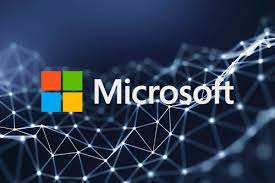Microsoft is rolling out a preview of its updated Recall AI feature for Copilot Plus PCs, aiming to enhance user productivity with a searchable visual timeline of past activities. This feature, initially announced last year, faced delays due to security concerns but is now being introduced to Windows Insiders before a wider launch.
Recall is designed to capture snapshots of a user's screen periodically, creating a visual history of their interactions across applications, websites, and documents. These snapshots are stored locally and can be searched using natural language, allowing users to revisit previous tasks or information effortlessly. Think of it as a searchable photographic memory for your computer, helping users retrace every step they took while working – documents, chats, meetings, websites, and even app usage.
Key features of the updated Recall include a visual timeline that organizes captured snapshots chronologically, enabling users to scroll through their digital history and locate specific content easily. Users can search for past activities using everyday language, such as "Find the presentation I was working on last Monday," making the retrieval process intuitive and efficient. All data captured by Recall is processed and stored locally on the device, ensuring that sensitive information remains private and secure.
Microsoft has implemented several security features to address privacy concerns associated with Recall. The feature is disabled by default, and users must actively enable it. Captured snapshots are encrypted and can only be accessed after user authentication via Windows Hello Enhanced Sign-in Security. Users can exclude specific apps and websites from being recorded. Snapshots stop automatically during incognito sessions, and users can pause Recall, delete individual snapshots, or wipe their entire Recall history anytime, ensuring full control lies with the user.
Alongside Recall, Microsoft has introduced Click to Do, an AI-powered feature that enables interactive actions on saved snapshots. Users can copy text, save images, or perform other tasks directly from the snapshots. Click to Do utilizes the local Phi Silica model in Copilot+ PCs to connect actions to content found by Recall. For example, if a user watches a video featuring a shirt they like, Click to Do can identify the shirt and offer the option to search for where to buy it online using Bing.
Recall is exclusive to Copilot Plus PCs, which are Windows 11 machines optimized for AI workloads. These devices feature advanced NPUs (Neural Processing Units) from Intel, AMD, and Qualcomm, positioning these PCs as the hardware backbone of Microsoft's AI vision. Other features like Live Captions, Cocreator, and Studio Effects are also exclusive to this category of devices.
The updated Recall preview is being gradually rolled out to Windows Insider users on eligible Copilot Plus PCs, with a wider public release expected later in 2025. Early testers have praised Recall's ease of use and performance, and Microsoft continues to tweak the UI and AI models based on user feedback.
To use Recall, users will need to opt-in to saving snapshots and enroll in Windows Hello to confirm their presence, ensuring that only they can access their snapshots. Microsoft emphasizes that Recall data won't be used to train AI models or shared externally. To access Recall, users need to enable Windows Hello for authentication and have BitLocker and Secure Boot active. The feature automatically detects and excludes sensitive information such as passwords and credit card details from snapshots.
With its AI capabilities, Recall makes it possible to quickly find and get back to any app, website, image, or document just by describing its content. It offers a new way to search for things users have seen or done on their PC securely, saving time and enhancing productivity.

















